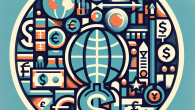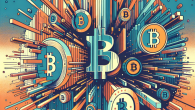
How Artificial Intelligence is Redefining Predictive Macroeconomic Modelling
Hawkish or Dovish? Understanding Central Bank Lingo and Its Global Impact
If you’ve ever watched a post-meeting press conference from the Federal Reserve, the ECB, or the Bank of England and thought to yourself, “Did that economist just refer to an avian species?”, you’re not alone. Welcome to the world of central bank parlance — cryptic, often frustratingly vague, yet deeply consequential to everything from your mortgage rate to the global flow of capital.
In this article, we shall dig into the linguistic quirks and economic gravitas behind two of the most iconic metaphors in macroeconomics: hawkish and dovish. More importantly, we’ll explore why these terms matter, how they shape global markets, and what you should be watching if you care about inflation, interest rates, or just staying one step ahead of market sentiment.
What Does It Mean to Be Hawkish or Dovish?
Let’s start with the definitions. In central banking lingo:
- Hawkish refers to a policy stance favoring higher interest rates, tighter monetary conditions, and a vigilant (some might say aggressive) approach to controlling inflation.
- Dovish refers to a preference for lower interest rates, looser monetary policy, and a prioritization of employment and economic growth over inflation containment.
Think of hawks as the monetary Dr. No — vigilant and unafraid of slowing down an overheated economy. Doves, on the other hand, could be equated to fiscal peacekeepers — eager to ensure no one gets left behind in the pursuit of price stability.
An Eloquent Tradition of Avian Metaphors
The use of “hawks” and “doves” actually dates back to policy discussions around warfare in the 20th century, with “hawks” favoring conflict and “doves” advocating for diplomacy. Economists, having a penchant for metaphors (and perhaps lacking originality), borrowed the terminology to apply it to the realm of monetary policy. Et voilà — macroeconomic ornithology was born.
Why Hawkish and Dovish Postures Matter
Central banks, especially in developed economies, hold what I call the “ Monetary Excalibur.” Their decisions can tighten or loosen liquidity — controlling the very blood flow of economies.
So when Jerome Powell clears his throat and says something “slightly more hawkish than expected,” bond yields shift. Currency markets tremble. Emerging markets reconsider capital controls. Your investment portfolio might feel it by morning.
The Mechanism of Market Impact
Let’s untangle how these birds influence the financial ecosystem:
- Interest Rates: A hawkish Fed may signal rate hikes or reduced bond purchases (a.k.a. tapering), which strengthens the U.S. dollar and softens equity markets.
- Bond Yields: Yields rise on hawkish sentiment as investors demand higher returns in response to future rate hikes. The inverse happens for dovish tones.
- Equities: Dovish policies often juice equity markets — lower borrowing costs and ample liquidity tend to fuel risk-taking.
- Global Capital Flows: Investors chase yields. If the Fed signals dovishness, capital may flow outward to higher-yielding emerging markets. Hawkishness reverses this.
These aren’t abstract figures in spreadsheets — they drive decisions for pension funds, hedge funds, and retail traders, not to mention fiscal planning across governments globally.
Case Studies: When Central Banks Flex Their Feathers
Case 1: The 2013 Taper Tantrum
In May 2013, then-Fed Chair Ben Bernanke hinted at tapering the Fed’s quantitative easing program. That single hawkish glimmer led to a market sell-off, a spike in Treasury yields, and massive capital flight from emerging markets. India and Indonesia found themselves scrambling to stabilize currencies and halt inflation spikes.
Case 2: Mario Draghi’s “Whatever It Takes” Moment
At the height of the Eurozone crisis in 2012, ECB President Mario Draghi uttered what would become monetary policy legend: “The ECB is ready to do whatever it takes to preserve the euro.” Markets immediately interpreted this as dovish — meaning the central bank would backstop growth through aggressive support. Bond spreads narrowed, confidence returned, and a continent exhaled.
Case 3: Powell’s 2021 Pivot
As inflation readings in late 2021 hit decade-highs, Fed Chair Jerome Powell did something previously unthinkable — retired the word “transitory” and acknowledged inflation was persistent. The language shift from dovish reassurance to hawkish vigilance marked a turning point in market expectations and triggered a bear market in equities in early 2022.
Interpreting the Birdsongs: How to Read Between the Lines
Reading central bank communications requires the patience of a scholar and the intuition of a poker player. Speeches, policy minutes, and even Q&A sessions can carry clues.
Key Phrases to Watch
- “Data-dependent”: Classic central banker ambiguity — a neutral posture but can imply flexibility for hawks or doves alike.
- “Transitory”: A dove’s favorite word. Market fatigue with this term in 2021 turned sentiment quickly hawkish.
- “Appropriate to begin normalization”: Signals tighter policy on the horizon — a hawkish drumroll.
- “Sufficient progress”: Often precedes tapering — a polite way of saying “Brace yourselves.”
My advice? Build a central banker bingo card. It’s more amusing than you’d think, and you might just catch a shift in monetary winds before the traders do.
So… Are We in a Hawkish or Dovish Cycle Right Now?
As of mid-2024, we stand on the edge of ambiguity. Inflation has receded in much of the developed world, and recessionary murmurs have grown louder. Central banks, having unleashed historic tightening since 2022, are treading carefully. If you’re expecting a clear answer — my dear reader — you haven’t been paying attention. Central banks are masters of the pause, not the exclamation point.
The current rhetoric leans tentatively neutral-to-dovish. However, any sharp rise in commodity prices, a resurgence of inflation, or geopolitical shock could bring the hawks screeching back into view.
Final Thoughts from a Curious Economist
Whether you’re managing an institutional portfolio or simply wondering when mortgage rates will cool off, understanding the “hawk versus dove” dichotomy gives you a vital edge. These metaphors are more than mood markers — they shape global liquidity, investor behavior, and economic momentum.
As always, remain skeptical, stay literate in central bank dialect, and remember: In the theater of monetary policy, every pause, every sigh, every carefully chosen word is part of the performance. And the markets? Well, they’re in for the show.
For more insights on how global macro forces shape your world, visit our About Us page or Contact Us directly. Let’s navigate the noise — together.









Leave a Reply